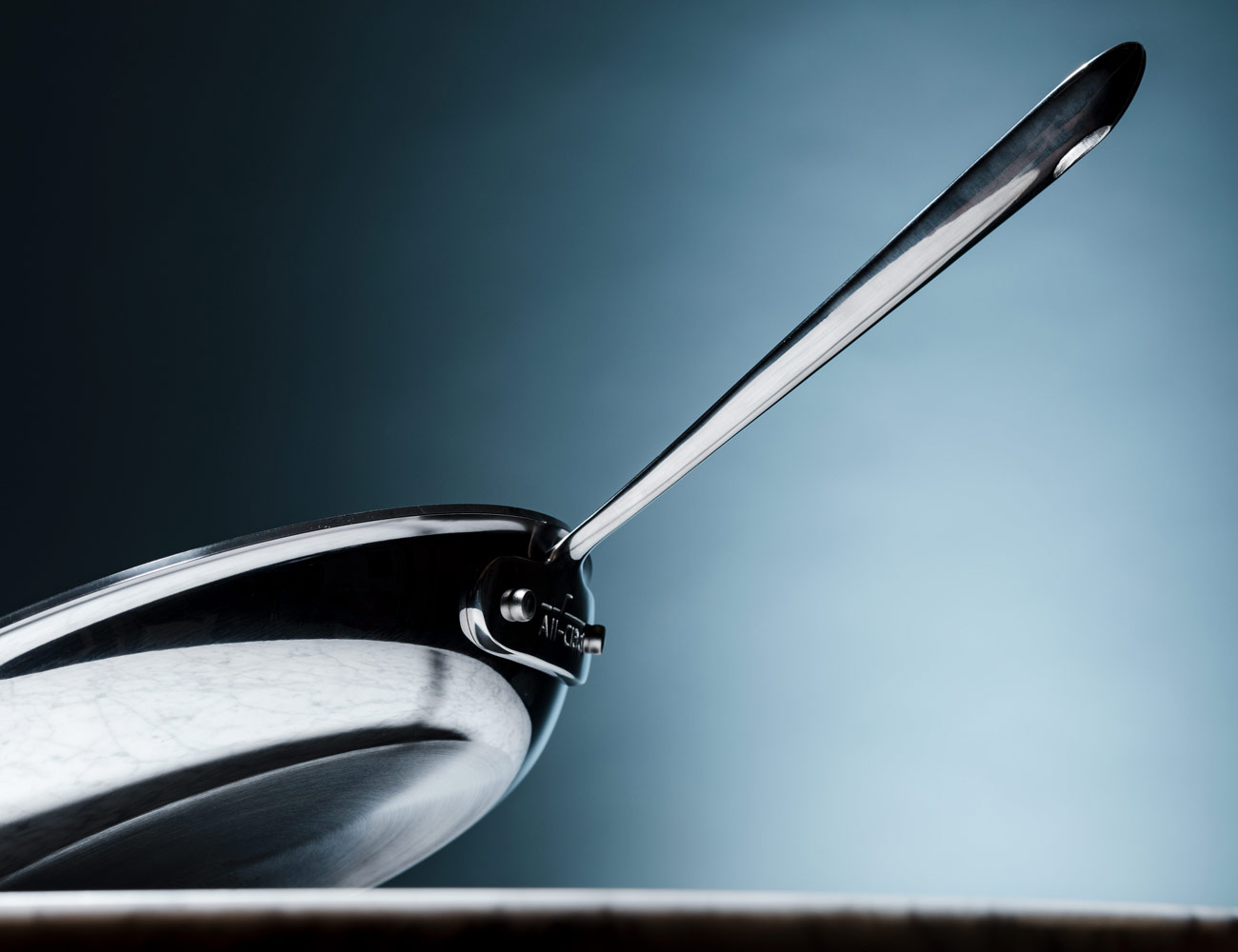Ask anyone who’s anyone what the best stainless steel cookware you can buy is and they’ll likely spew the same name as everybody else: All-Clad.
The company that’s come to dominate the idea of premium stainless steel cookware has built a rock solid foundation of excellence by way of chef endorsements, word of mouth and teasing out the ideal performance from the kitchen’s most multifunctional cooking tool. But is it really that much better than its cheap counterparts — hyper-affordable pans from brands like Cuisinart and Calphalon?
Considering its most popular product, the D3 Stainless Steel Fry Pan, retails right at $100, a significant dollar divide exists between it and the competition. I tested one to find out what those extra dollars get you.
Even Heating: It was almost funny how thoroughly All-Clad’s D3 beat out Cuisinart (this one) and Calphalon (this one) in this regard. To test, I allowed each to heat on my range at home at the same heat level for the same amount of time and measured the temperature in five areas of the surface (each corner and the center). Where the Calphalon and Cuisinart options both showed temperature differences from 60 to 95 degrees between spots, I didn’t record anything over a 25-degree difference on the All-Clad pan. This means fewer and less impactful hot spots when cooking, which is a huge plus.
(For fun, I performed the same test with my 10-inch fry pan from Made In Cookware, which happens to be my favorite pan, and observed differences between 35 and 45 degrees.)
Balanced Weight: The uber-cheap category of skillets, as it turns out, suck at retaining heat. They’re very light (both of the ones I tested were under three pounds), which is nice when tossing veggies, but it might be the downfall in this department. When I heated each of the three up and placed a chicken breast in the center, the two cheap skillets both dropped dramatically more heat than the All-Clad. Not only that, the All-Clad pan recovered its lost heat more quickly than the other two, allowing for a deeper and better sear. And, frankly, the All-Clad pan is only half-a-pound heavier than the cheaper options. That weight isn’t enough to get upset about.

Lifetime (Limited) Warranty: If any damage or problem stems from manufacturing issues and occurs during regular use (you didn’t just throw it on the ground), All-Clad will replace the product. In this category All-Clad isn’t all that special — Calphalon does this, as does Cuisinart. As it turns out, most cookware makers provide a guarantee that’s identical (or at least similar) to this one.
History of Excellence: Though historical quality doesn’t always equate to present-day returns, it makes sense in this case. All-Clad’s wares have been made in the same factory, by many of the same craftsmen, since 1971. All-Clad literally invented bonded cookware (cookware that’s layered with different metals for greater performance) so it’s fair to say it has some degree of expertise in the area. Couple this with recommendations from respected review outlets like Cook’s Illustrated and Wirecutter, which almost always recommends cheaper options, and a mountain of professional-chef endorsements and you have a different sort of frying pan.
Durability & Maintenance: This I don’t have an exact explanation for, but the surface of the All-Clad pan didn’t show any signs of discoloration or blurring of its initial shine. After multiple hard sears, short oven roasts and plenty of eggs, a simple hot wash and soap brought it back to near-original shine. I don’t know what accounts for this, but the Calphalon, Cuisinart and virtually every other stainless steel skillet I’ve owned have not done this. Consider it a cherry on top.

